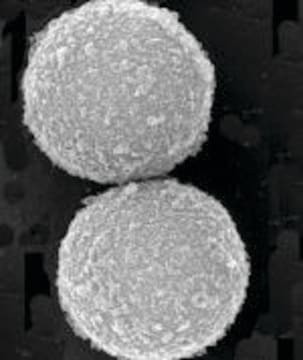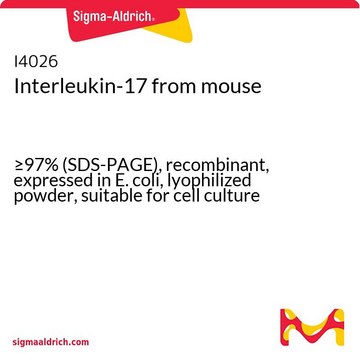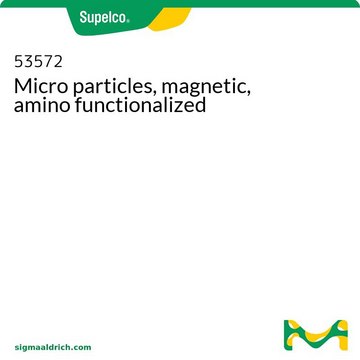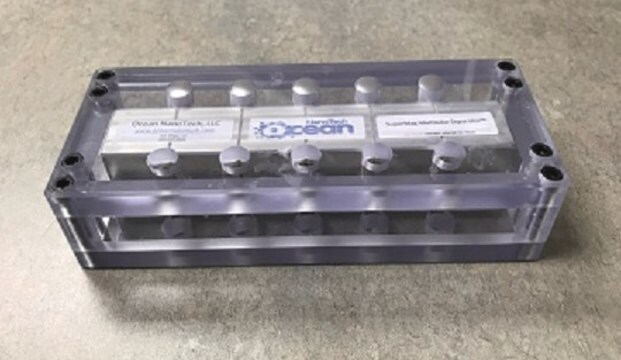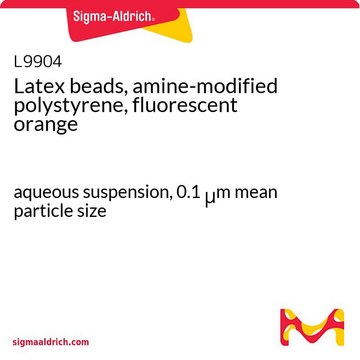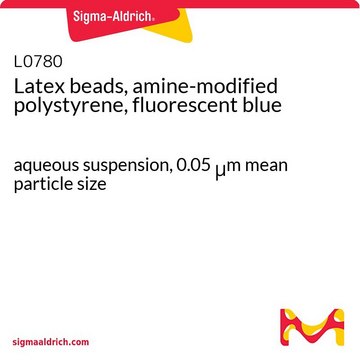Alle Fotos(1)
Wichtige Dokumente
I7643
Magnetische Partikel, Amin-Endgruppen
50 mg/mL in deionized water
Anmeldenzur Ansicht organisationsspezifischer und vertraglich vereinbarter Preise
Alle Fotos(1)
About This Item
Empfohlene Produkte
Biologische Quelle
synthetic (organic)
Form
suspension
Konzentration
50 mg/mL in deionized water
Kennzeichnungsgrad
~12 μmol per mL
Methode(n)
affinity chromatography: suitable
Matrix
Superparamagnetic iron oxide particles, approx. 1 μm in size
Kapazität
~10 mg/mL, protein coupling capacity (protein)
Eignung
suitable for microbiology
Lagertemp.
2-8°C
Anwendung
Amine-terminated magnetic particles are buffered in an aqueous solution and used for affinity chromatography, protein chromatography and activated/functionalized matrices. Amine-terminated magnetic particles have been used in the development of methods to detect Mycobacterium tuberculosis and Herpes Simplex Virus-1.
Lagerklassenschlüssel
11 - Combustible Solids
WGK
WGK 3
Flammpunkt (°F)
Not applicable
Flammpunkt (°C)
Not applicable
Hier finden Sie alle aktuellen Versionen:
Besitzen Sie dieses Produkt bereits?
In der Dokumentenbibliothek finden Sie die Dokumentation zu den Produkten, die Sie kürzlich erworben haben.
Kunden haben sich ebenfalls angesehen
David A C Thomson et al.
The Analyst, 136(8), 1599-1607 (2011-03-04)
Amplification-free detection of nucleic acids in complex biological samples is an important technology for clinical diagnostics, especially in the case where the detection is quantitative and highly sensitive. Here we present the detection of a synthetic DNA sequence from Herpes
Feng Wang et al.
Bioresource technology, 101(23), 8931-8935 (2010-07-27)
Newly large-pore magnetic mesoporous silica nanoparticles (MMSNPs) with wormhole framework structures were synthesized for the first time by using tetraethyl orthosilicate as the silica source and amine-terminated Jeffamine surfactants as template. Iminodiacerate was attached on these MMSNPs through a silane-coupling
Edith Torres-Chavolla et al.
Biosensors & bioelectronics, 26(11), 4614-4618 (2011-05-28)
The present study describes the development of a DNA based biosensor to detect Mycobacterium tuberculosis using thermophilic helicase-dependent isothermal amplification (tHDA) and dextrin coated gold nanoparticles (AuNPs) as electrochemical reporter. The biosensor is composed of gold nanoparticles (AuNPs) and amine-terminated
Unser Team von Wissenschaftlern verfügt über Erfahrung in allen Forschungsbereichen einschließlich Life Science, Materialwissenschaften, chemischer Synthese, Chromatographie, Analytik und vielen mehr..
Setzen Sie sich mit dem technischen Dienst in Verbindung.
